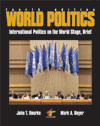As in many countries, Western pop culture is making significant inroads in China. Children there successfully pester their parents into buying 180,000 Mi Loushu (Mickey Mouse) comic books each month, and the mayor of Shanghai traveled to Los Angeles in November 1996 to try to convince Disney officials to build a Disneyland in his city. Kentucky Fried Chicken is also winning many converts to its American specialty with outlets in 28 cities. KFC is the most widely disbursed fast-food chain, and McDonald's, with 200 outlets in 17 cities, the most numerous. When that company's first Beijing eatery opened in 1992, some 13,000 customers were lined up, despite the fact that the $1.81 for a plain hamburger, small fries, and small soda equaled about a half-week's pay for the average Chinese worker. "It's a bit expensive to eat here at McDonald's," said university student Zhang Wei, "but I guess for a high-fashion restaurant like this, the prices are O.K."1 After indulging in a jishi hanbao (cheeseburger), hungry Chinese might go to Dairy Queen to get a sheng dai (sundae) for dessert. After that gastronomic tour de force, the calories can be worked off by dancing at Beijing's Hard Rock Cafe to the music of China's top rock star, He Yon, and his smash hit, A Giant Garbage Dump. Beware, though. The seafood-flavored Chee-tos favored in China might seem strange to your taste. Finally, exhausted by your night's adventures, revelers might choose to get some rest at Beijing's Holiday Inn. While at the hotel relaxing, patrons can turn on the television and watch CNN in English or change channels to watch Michael Jordan and the Chicago Bulls further improve on their record sixth National Basketball Association (NBA) championship in 1998. Indeed, the teams and players of the NBA are a sports rage in China. China's state television shows as many as two NBA games each weeknight and more on the weekends. Fans shout pee-ow liang! (pretty) for 3-point jump shots, but their favorite is the awesome kou qui (slam dunk). The NBA is teaming up with sneaker producers Nike and Reebok to promote the sport and to sell a bonanza of merchandise to what they hope will be more than 1 billion fans. "We are really bullish, if you'll excuse the term on basketball in China," says an NBA executive stationed in Hong Kong.2 Of course in China, like most countries, not all the merchandise is licensed, but, as the boy's sweatshirt in the accompanying photo shows, it is often possible to tell the difference between the authorized and the knock off goods. Notes 1. New York Times, April 24, 1992, p. A4. 2. New York Times, February 24, 1996, p. D4. |



 2002 McGraw-Hill Higher Education
2002 McGraw-Hill Higher Education